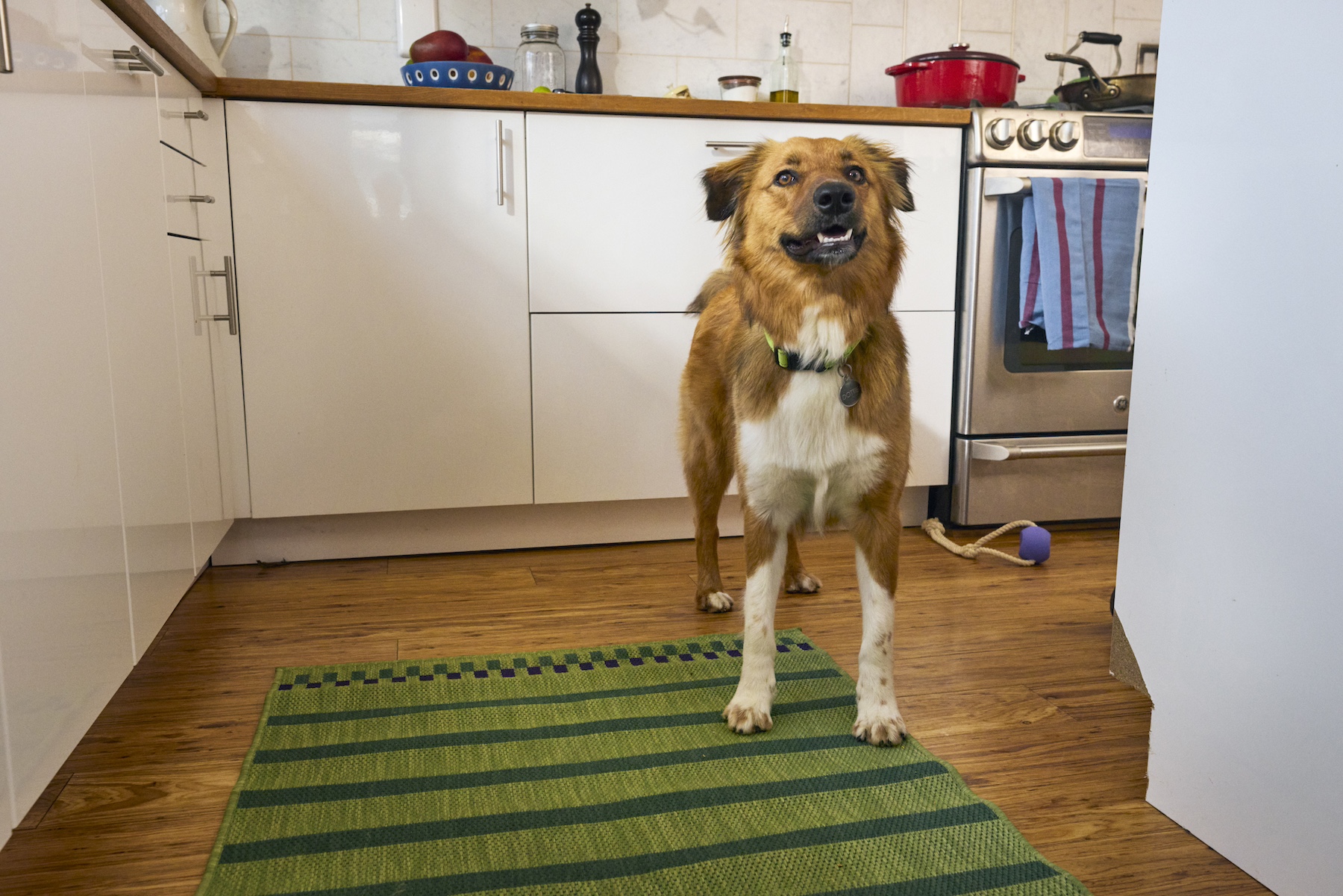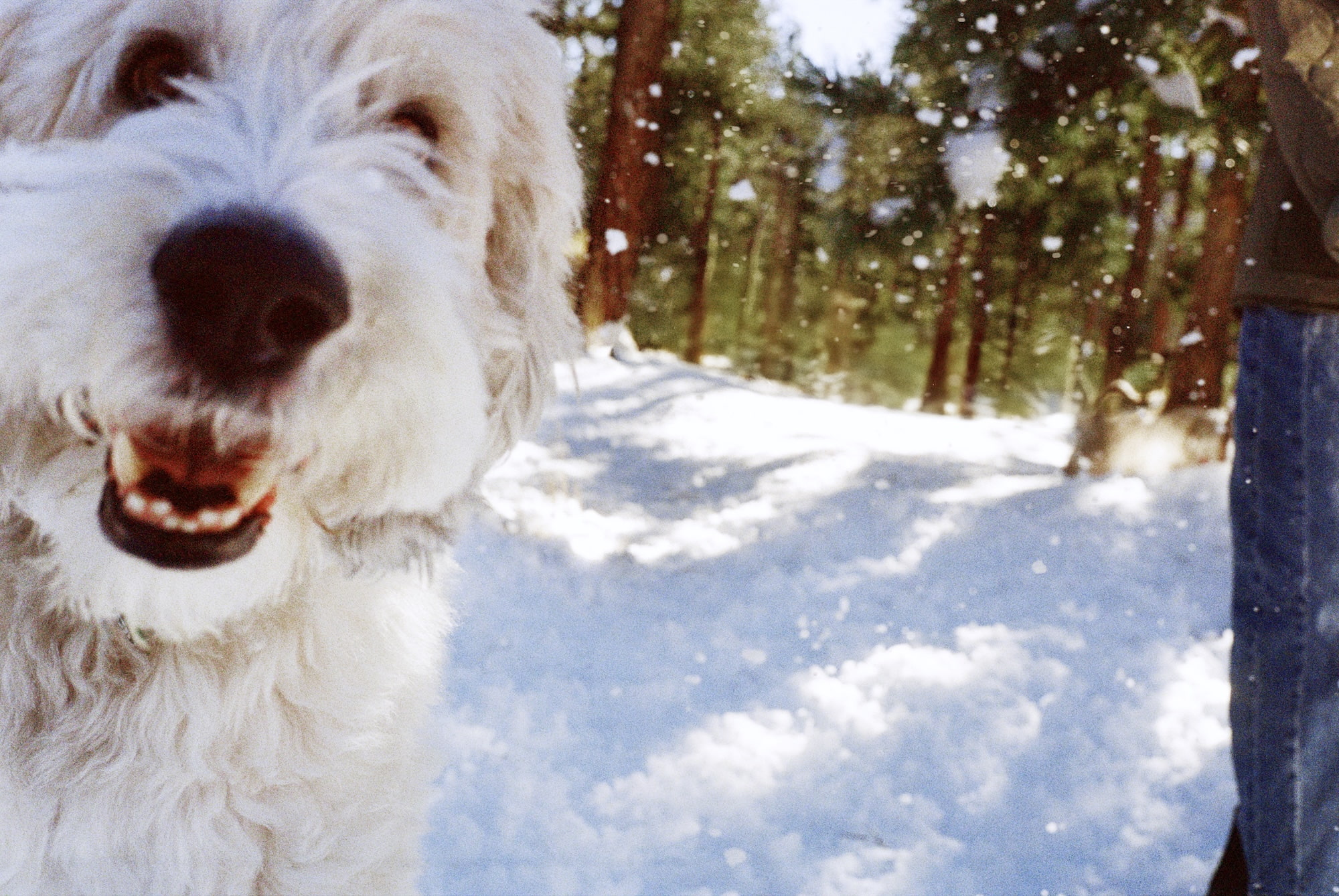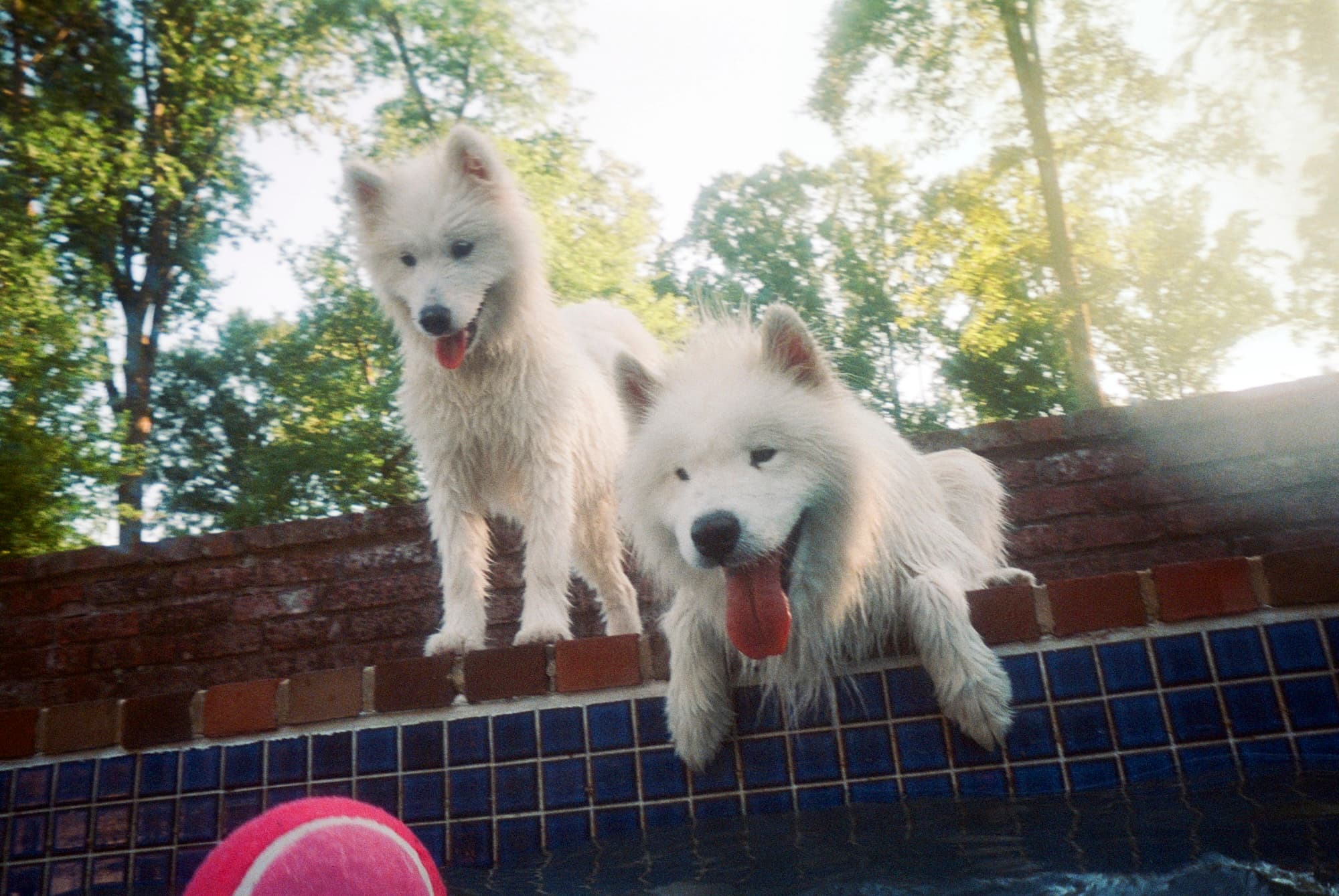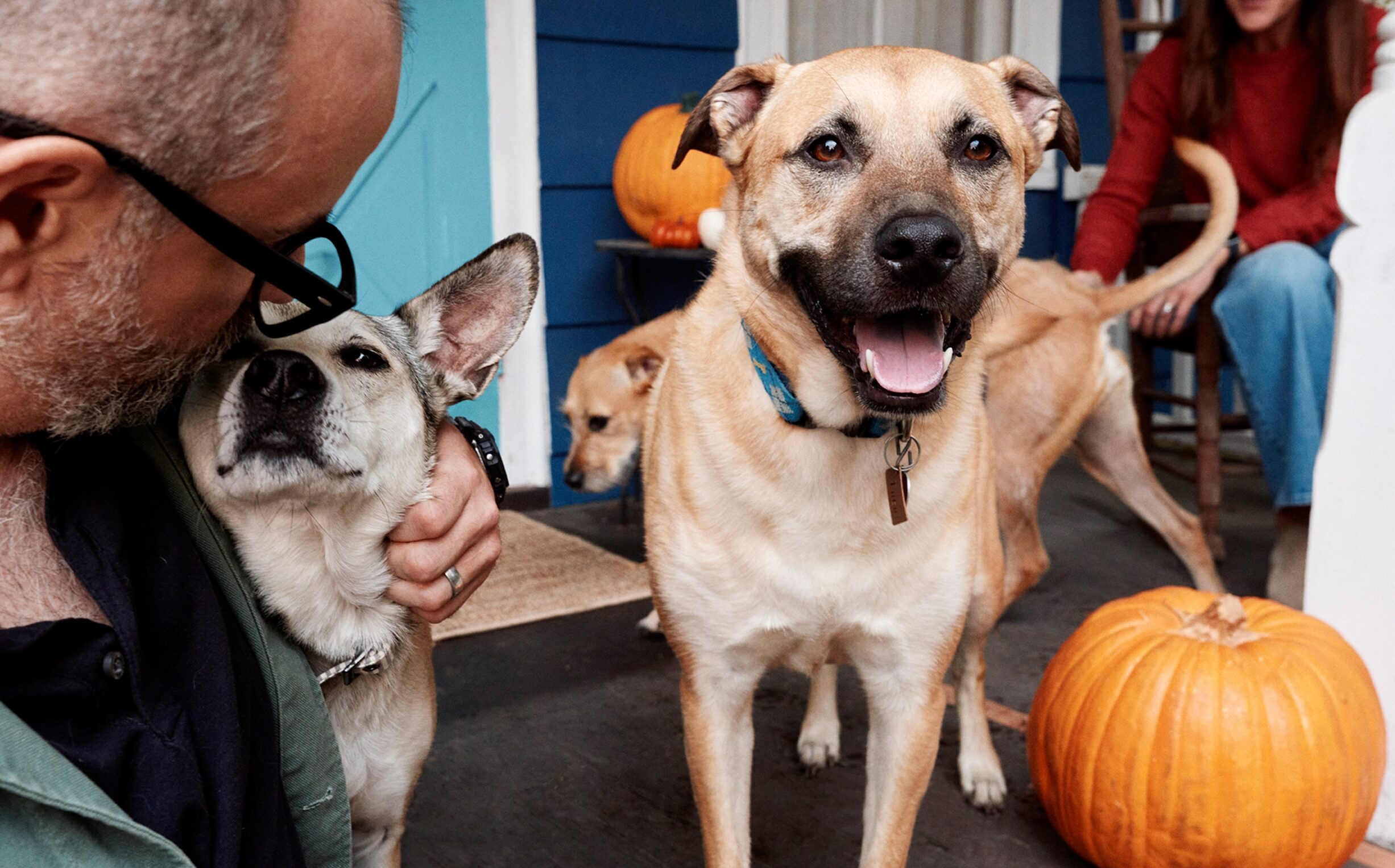
Anyone with a dog knows that dogs can understand words. Some dogs can understand a lot of words. Chaser, a border collie, famously learned the names of more than 1,000 objects. Dogs have been able to learn a kind of “reading,” and—in at least one case—how to type. Still, many dog people wonder just how far dogs’ comprehension goes—when you speak in full sentences, what are they picking up? If you tell them that you love them and they’re the best dog in the world, what does that mean to them? And is it possible that dogs can even “talk” using buttons, as depicted in viral videos?
Here’s what we know, including the results of recent research on dogs’ comprehension of words played by soundboards.

A recent study found that dogs can understand words even without any other cues
Dr. Federico Rossano of the University of California, San Diego and his colleagues—including some affiliated with FluentPet, a company that sells soundboards—recently researched dogs’ reactions to words played from the devices. In results that probably won’t surprise anyone reading this, participating dogs showed “contextually appropriate” behaviors after hearing words related to “play” and “outside,” even without any other cues. This means that, after hearing “play” words, participating dogs did “play” things—and, after hearing “outside” words, they acted like they thought they’d get to go outside.
Dr. Rossano says that this research is a very early step in the long process of figuring out how much dogs who seem to be “talking” by pushing buttons on soundboards are communicating their thoughts. (Dr. Rossano wants to make clear that, although he is working with a company that makes the buttons, he himself is not selling them and is “not in the button business”).
While it might seem obvious that dogs understand some of the words we say—lots of us have had to learn to spell out “TREAT” or “WALK” so that our dogs don’t absolutely lose it when we’re just referring to these things and not announcing them—proving it is another matter. Dr. Rossano sought to isolate the sound of the words themselves to make sure that dogs weren’t picking up on other signs that things like play or a walk outside were on their way. Without that proof, he says, “It might be a bunch of behavioral cues that tell them you’re going to go outside—and it has nothing to do with what you just said.”
This study didn’t tell us whether dogs with soundboards are “talking.” More on that later. What it did show is that dogs understood words coming out of soundboards the same way they would if their humans had been speaking them.

How to talk to your dog
What’s the best way to get a point across to your dog?
Sarah-Elizabeth Byosiere, a Certified Applied Animal Behaviorist (CAAB) and the former Director of the Thinking Dog Center at CUNY Hunter College, says, “I personally find that giving dogs a moment to ‘think’ is helpful when asking them to respond to a cue.” In other words, slow down and let them process. “If you give a cue,” Dr. Byosiere says, “and your dog doesn’t immediately respond with the behavior you’ve asked for, give it a second or two. See if they’re paying attention to you. Were they distracted? Did they not hear you? Are they giving you a quizzical face? Sometimes just giving them a moment will give them the time to perform the behavior you were looking for.”
In addition to giving your dog time to grasp what you’ve said, slowing your speech could also help. Recent research from the University of Geneva in Switzerland suggests that talking more slowly might help people communicate better with their dogs.
Scientists have also written about experiments in which dogs spent more time near the sound of “dog-directed speech”—something like “baby talk”—than “adult-directed speech.” None of this means that you need to scientifically engineer a specific way of talking to your dog based on these findings if you already have a bond that’s working for both of you. Every dog, and every human, is different. If your dog loves your deep, resonant, adult-sounding voice, and is following your rapid-fire commentary, keep it up. Just make sure that, whatever you do, you’re kind to them.
If what you’re doing is intentionally trying to associate a word with a particular skill or action, timing is also key. Say “sit,” for example, and promptly reward your dog for the successful sit with a treat. Dogs, who use body language to communicate themselves, may also pick up on what you’re trying to tell them more easily if you incorporate hand signals on top of the words you’re using.

How to listen to your dog
When we asked Dr. Alexandra Horowitz if she thought that dogs with soundboards were forming and understanding sentences with syntax, she said: “I don’t, nor would I expect them to. But they are communicating with us madly all day long, if we only spend time observing their behavior.”
People are understandably interested in teaching dogs how to communicate in “human” ways. But, Dr. Byosiere says, she’d love to see humans ask themselves how they can learn to understand their dogs’ own “language” better.
In general, Dr. Byosiere says, “Humans are not that great at reading dog body language. Dogs vary in shape, size, and the ways in which individuals behave. The context or situation that takes place in association with a given behavior is really important! This means that to be better communicators in the dog-human relationship, we need to learn more about subtle changes in body language and behavior that indicate the underlying emotional state of the dog.”
Dr. Byosiere likes seeing humans train their dogs to use buttons, because it can be a fun activity and an opportunity to bond. But she stresses the importance of understanding dogs’ communication on their own terms. “While it’s fun to play with your dog with buttons, and I encourage us all to spend more time interacting with our pets,” she says, “I believe that becoming better communicators with our dogs requires us to open our ears, eyes, and available senses to interpret what they’re trying to tell us in each and every moment.”
Do dogs “get” syntax?
When we spoke to behaviorist Dr. Ian Dunbar, he told a story in which his dog Phoenix brought a note to his son Jamie after hearing him say: “Come here. Take this note. Go find Jamie.” One possible explanation for this is that Phoenix was able to connect the meanings of all of these words.
In research that isn’t yet published, but he finds promising, Dr. Rossano says he sees evidence that dogs are not acting “randomly” when they push multiple buttons. He doesn’t know enough yet to say whether he thinks dogs can understand syntax, but is interested in further research. “If you [a dog] have trained with ‘want,’” he says, “and then you start pushing ‘want outside,’ ‘want toy,’ ‘want water,’ without being trained for it—I’m sorry, but this is amazing. Because basically you have understood something about what ‘want’ means.” He doesn’t know whether dogs are capable of this, but is open to the possibility.

Can dogs, uh, tell us about their dreams?
Among the more provocative videos of dogs “talking” using soundboards features a dog named Bunny purportedly answering the question “what talk sleep?” (Translation: “What were you just barking about while you were asleep?”) with the words “stranger animal.” If Bunny were really recounting her dream, she would have to know that she was dreaming, understand the question as her human phrased it, and know that the words “stranger animal” were a good description of said dream. That’s many steps beyond what we know about dogs’ ability to understand certain concepts and communicate them.
At the moment, Dr. Rossano, like many others, is skeptical. “Right now,” he says, we are at the point of saying, “When they say ‘outside,’ do they know ‘outside?’ When they say the name of this toy, do they know what they mean?’” He says that, if we ever see proof that dogs can understand and describe dreams, it will be a long time from now.
Having said that, there is good reason to believe that dogs and other animals do dream. And the footage of them seeming to do so is often very cute.
Do dogs know what “I love you” means?
As noted in the introduction to this article, friends and colleagues have asked us if dogs understand what their people mean when they say “I love you.”
Dr. Rossano isn’t sure how much dogs understand what humans mean by “love,” but thinks that we’re getting our point across. “Whether they understand ‘I love you’ in terms of ‘I would be willing to be hit by a car to save you because of how much I love you,’” he says, “I don’t know. We will never know. But [if] the dog reacts by approaching and trying to get close to you and so on when you say it, I think they understand.”
Dr. Byosiere, meanwhile, says, “I’d argue, does it really matter? If their tail is wagging, you’re close to them, they’re getting pats, they’re coming back to you for more, they’re flipping over, doing zooms, licking your face, does it really matter if you’ve said ‘hello!’, ‘who’s a good dog?’, or ‘I love you?’ They’re reading your body language, your tone of voice, and your interactions with them, and responding with what is likely equally excitable behavior. If we can read their behavior in response to our own, and understand that their underlying emotional state is one of enjoyment, well, they may just be saying ‘I love you’ back. To me, this type of interaction speaks louder than words—literally.”




